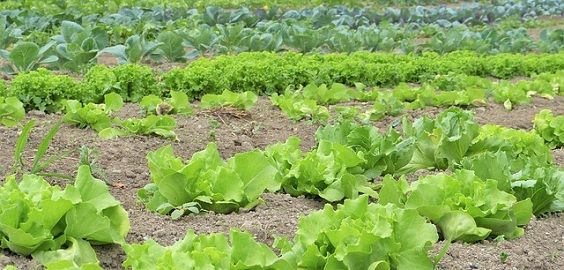An In-Depth Consider the Difficulties and Advantages of Modern Farming
Modern farming stands at the crossroads of technology and sustainability, offering a multitude of challenges and possibilities. With advancements like precision farming and biotechnology promising enhanced productivity, the market all at once grapples with crucial problems such as ecological destruction and socio-economic variations. As we explore the elaborate equilibrium between technical development and its more comprehensive impacts, the inquiry develops: can we accomplish a lasting future that benefits both the atmosphere and farming neighborhoods? The path forward requires a cautious evaluation of these dynamics, welcoming stakeholders to take into consideration the possibility for transformative modification in agricultural practices and plans.
Technological Innovations in Farming
Developments such as accuracy automation, biotechnology, and agriculture have transformed typical farming methods, enabling for even more lasting and lucrative procedures. Precision agriculture utilizes GPS innovation, sensors, and information analytics to maximize field-level management relating to plant farming.
Automation in farming has actually better moved the market ahead, with the intro of independent tractors, drones, and robotics. These technologies reduce labor demands and boost functional speed, enabling for prompt growing and harvesting. Drones, in certain, give beneficial airborne images and information, helping farmers in monitoring crop health and spotting problems early.
Biotechnology has likewise played a critical duty in advancing farming methods. Genetically customized organisms (GMOs) have been developed to boost crop resistance to bugs and illness, reduce dependence on chemical treatments, and improve nutritional content. This technology adds to food protection and satisfies the demands of an expanding international populace. Collectively, these technological innovations have actually laid the groundwork for a more sustainable and resistant farming future.
Environmental Difficulties
Agriculture deals with a number of environmental obstacles that intimidate its sustainability and performance. The lasting stability of agricultural land is compromised, demanding the adoption of even more sustainable practices.
Water deficiency is one more significant obstacle, specifically in regions where agriculture heavily relies upon watering. Environment adjustment is magnifying this issue, changing precipitation patterns and increasing the frequency of dry spells. Reliable water management systems, such as drip watering and rainwater harvesting, are important to reduce these results, however their implementation remains unequal throughout various regions.
Additionally, farming is both a contributor and a victim to climate modification. It represents a considerable share of greenhouse gas emissions, mostly from animals production and rice farming. Transitioning to low-emission farming methods, such as accuracy farming and agroforestry, can help lower this effect. Nevertheless, these techniques need significant investment and technological proficiency, positioning an obstacle to prevalent adoption. Resolving these ecological difficulties is important for guaranteeing a lasting farming future.

Economic Influences
The economic effects of contemporary farming are complex and profound, influencing both neighborhood and worldwide markets. Developments in basics modern technology and production techniques have actually dramatically enhanced agricultural efficiency, leading to a lot more reliable food supply chains and reduced costs for consumers.
Nonetheless, these benefits are not without challenges. The capital-intensive nature of modern agriculture requires significant investment in machinery, fertilizers, and genetically changed seeds, which can be monetarily burdensome for small-scale farmers. This frequently results in enhanced financial obligation and financial vulnerability, potentially leading to the debt consolidation of ranches and the loss of rural source of incomes. Furthermore, worldwide market variations can influence the productivity of farming exports, making economic situations reliant on farming prone to economic instability.
In addition, subsidies and profession policies in established nations can distort market prices, influencing competitive equilibrium and possibly disadvantaging farmers in establishing nations. In general, while modern-day farming drives financial growth, it also demands navigating complicated financial landscapes to guarantee equitable and sustainable advancement.
Social Effects
While contemporary farming has caused considerable advancements, it likewise offers various social ramifications that necessitate consideration. One significant problem is the displacement of small farmers as a result of the rise of big agricultures. As company farming entities increasingly dominate the farming landscape, smaller farms frequently battle to complete, causing the disintegration of rural areas and conventional farming methods. This change can cause a loss of neighborhood knowledge and cultural heritage that smaller sized ranches sustain.

In addition, there are worries regarding food security and sovereignty. The focus on monoculture and genetically customized plants can weaken biodiversity and make food systems a lot more vulnerable to parasites and conditions. Such practices might likewise restrict customer selections and lower the capability of regional neighborhoods to regulate their food resources. As these social ramifications unfold, it becomes essential to address them to make certain lasting and equitable agricultural growth.
Future Instructions
Looking in advance, a number of appealing methods for modern-day farming can address the challenges faced today while fostering sustainable growth. Advancements in innovation, such as precision agriculture, offer the potential to optimize source usage and boost efficiency.
Biotechnology also holds immense promise for the future of agriculture. Genetically changed microorganisms (GMOs) and genetics modifying methods, like CRISPR, might enhance plant durability against climate change, parasites, and conditions, therefore enhancing food safety and security. Branching out plant ranges to include more nutrient-dense and climate-resilient choices can bolster both ecological stability and human nutrition.

Verdict
Modern farming, characterized by technological improvements, provides both chances and challenges. commercial farming vs subsistence farming. Addressing these complexities requires a change towards lasting methods that balance efficiency with environmental stewardship and social equity, thus making sure a resistant future for global agricultural systems.
Modern agriculture stands at the crossroads of advancement and sustainability, offering a plethora of opportunities and challenges. Additionally, worldwide market changes can influence the productivity of agricultural exports, making economic situations reliant on farming vulnerable to economic instability.
Furthermore, the intensive use of technology and mechanization in agriculture has actually led to a reduction in farming employment opportunities.Looking ahead, numerous encouraging methods for contemporary farming could attend to the challenges faced today while promoting lasting growth. commercial farming vs subsistence farming.Modern farming, characterized by technical advancements, presents both obstacles and chances